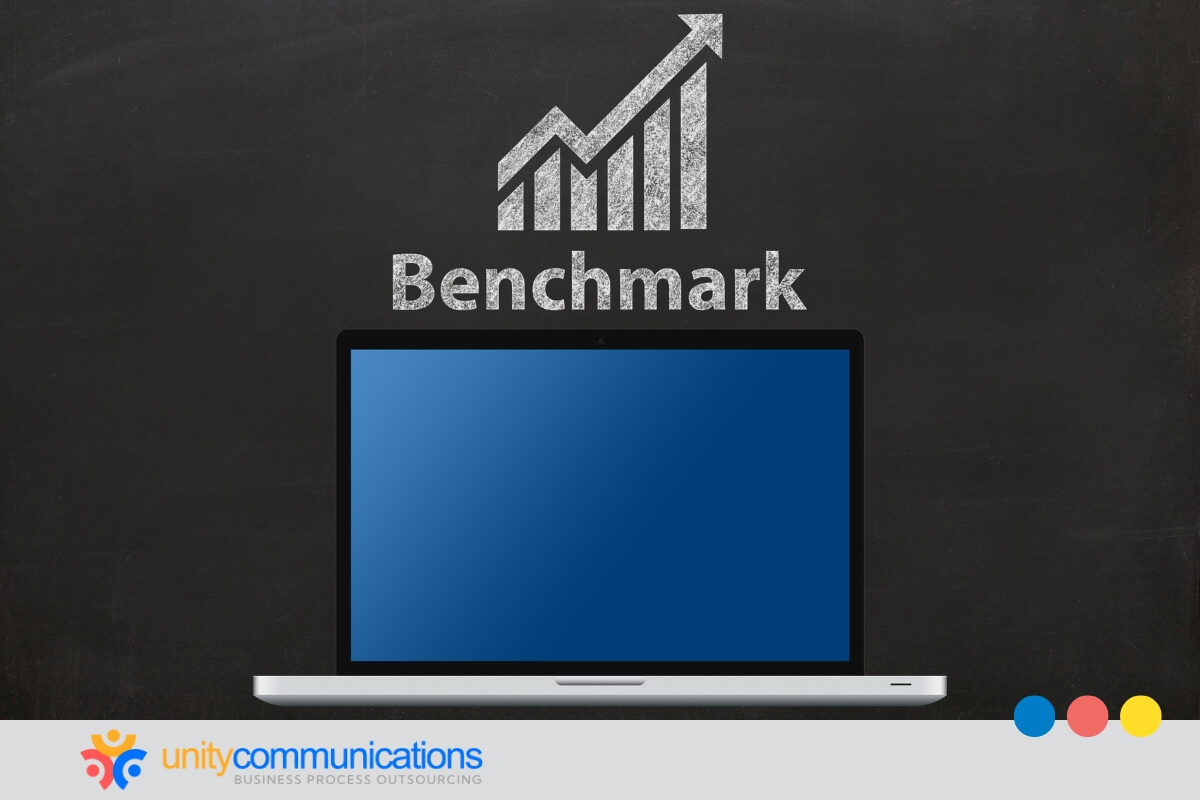Table of Contents
A strong online presence starts with knowing how your brand performs across different platforms. Conducting a social media audit helps small businesses refine their strategy and maximize engagement.
Many companies also work with social media marketing services to streamline the process, drive data-driven decisions, and scale without exhausting the internal team.
But how do you do it? Whether handling it in-house or outsourcing, a well-executed audit is necessary to align social media efforts with your business goals. This article shows you the steps.
What is a social media audit and why your businesses needs one

With over 5 billion active social media users worldwide, having a well-optimized digital strategy is more critical than ever to attract the right audience, broaden your reach, and boost conversions.
A social media audit comprehensively reviews your business’s social media presence, analyzing performance metrics, audience engagement, and content effectiveness. It helps you:
- Identify strengths, weaknesses, and growth opportunities
- Align campaigns with business and marketing goals
- Refine content and boost engagement
- Benchmark against competitors using real data
Small businesses can audit social media since tools are already available. However, as digital marketing evolves, outsourcing social media marketing is becoming a popular solution to scale efficiently.
How outsourcing works varies depending on your needs. Although it typically involves hiring external experts to manage content creation, engagement, and performance analysis.
10 steps to run a successful social media audit
Regardless of whether you want to audit social channels internally or externally, knowing the process is essential to driving smarter, goal-aligned growth. Below are the ten essential steps:
1. List all active social media accounts
Before optimizing your social media strategy, you need a clear picture of where your brand is active online. Many businesses have old or duplicate accounts they have lost track of, which can confuse customers and dilute engagement. A thorough review ensures you focus on the right platforms and maintain a consistent brand presence.
Search your business name on major platforms to find forgotten or unofficial accounts. Check old emails for sign-up confirmations from past social media accounts. Review past marketing materials or business cards for outdated profile links.
Look for employee-managed accounts that might still represent your brand. Claim or deactivate any inactive or duplicate accounts to avoid confusion. Once you have gathered all your active accounts, document them in a central list and decide which ones to keep, update, or remove for a more streamlined online presence.
2. Audit your branding for consistency and credibility
A solid social media presence builds trust and brand recognition. Uniform logos, color schemes, or messaging can make your business appear professional and connected. Consistent branding enhances influencer marketing efforts, making it easier for these marketers to represent your business authentically and cohesively.
Use the same profile picture, logo, and cover image across all platforms. Keep bios and about sections aligned with your brand’s messaging and tone. Stick to a consistent color palette and font style in visuals and graphics.
Verify whether all links open to the correct website or landing pages. Regularly update branding elements to reflect current campaigns and company changes. Periodically review your social media profiles to align them with evolving business goals and marketing strategies.
3. Track key metrics to measure what’s working
To improve your social media strategy, you must understand which strategies are working and which are falling flat. Tracking key performance metrics reveals trends in engagement, audience behavior, and content effectiveness. This data-driven approach helps improve your tactics and focus on strategies that drive actual results.
Analyzing these insights also enhances social ad campaigns, ensuring your paid promotions reach the right audience and generate the best return on investment. Monitor engagement metrics such as likes, comments, shares, and saves.
Track follower growth and audience demographics to understand your reach. Use platform analytics to assess post performance and adjust content strategy. Measure website traffic from social media to see how effectively posts drive conversions.
Compare performance over time to identify patterns and optimize future campaigns. Use these insights to refine your social media strategy and focus on the content and tactics that drive the most engagement and conversions.
4. Review your content strategy for relevance and reach
Creating content without a clear strategy can lead to inconsistent messaging and missed opportunities. By assessing past posts, engagement levels, and audience preferences, you can fine-tune your approach for maximum impact. It ensures your brand stays relevant, engaging, and aligned with business goals.
Identify top-performing posts and analyze what made them successful. Balance promotional, educational, and engaging content. Use a content calendar to plan and schedule posts consistently. Experiment with different formats such as videos, carousels, and live streams.
Repurpose high-performing content across multiple platforms for greater reach. Analyze when your audience is most active to optimize post timing. Incorporate user-generated content to build trust and community engagement. Review your content strategy regularly and adjust it based on performance data and audience feedback to keep your social media presence fresh and compelling.
5. Analyze your audience to improve engagement
Understanding your audience’s demographics, interests, and behaviors helps you create social media content that truly resonates. For example, around 78% of consumers prefer learning about new products or services through short video content, making it crucial to tailor your strategy to these preferences.
Aligning your messaging with audience needs and preferences strengthens connections, increases brand loyalty, and drives meaningful engagement. Use social media analytics to track age, location, and interests. Monitor comments and direct messages to understand common questions or concerns.
Conduct polls and surveys to gather direct feedback from your followers. Analyze competitor audiences to identify potential gaps in your strategy. Adjust your content strategy based on engagement trends and audience preferences. Use these insights to create more relevant, engaging content that reinforces your brand’s connection with them.
6. Benchmark against competitors for new ideas
Keeping an eye on industry rivals provides valuable insights into your niche. Analyzing competitor strategies can uncover new content ideas, engagement tactics, and potential gaps in the market. Learning from others’ successes and mistakes helps refine your approach and stay ahead of the competition.
Identify key competitors and analyze their social media presence. Track engagement levels on their posts to see what resonates with their audience. Observe their content mix (videos, images, blogs) and posting frequency.
Use social listening tools to monitor mentions and brand sentiment. Look for opportunities where your brand can stand out or offer something unique. Apply these insights to your strategy to differentiate your brand and capitalize on more effective engagement opportunities.
7. Evaluate engagement and community interaction
Building a social media presence is about creating meaningful interactions. Engaging with your audience through comments, messages, and discussions nurtures relationships and boosts brand loyalty. It makes followers feel heard, valued, and encouraged to engage with your brand.
Respond to comments and messages promptly to build trust with your audience. Ask questions and encourage discussions to increase interaction. Acknowledge and share user-generated content to foster a sense of community.
Use polls, quizzes, and interactive content to boost engagement. Monitor brand mentions and address feedback professionally. Consistently engage with your audience to build strong relationships, encourage loyalty, and create a thriving online brand community.
8. Optimize hashtag and keyword use for discoverability
Using hashtags and keywords can significantly boost your content’s visibility and reach. Approximately 64% of consumers have used a branded hashtag in their social media posts, highlighting the power of well-placed tags in driving engagement.
Analyzing past usage helps identify which terms are most effective and which need adjusting. A strategic approach ensures your posts are discoverable by the right audience and aligned with current trends.
Research trending hashtags relevant to your industry and audience. Avoid overly generic tags that get lost in high-volume searches. Use a mix of branded, niche, and trending hashtags for better reach.
Incorporate relevant keywords naturally into captions, bios, and content. Regularly update your hashtag and keyword strategy based on performance data. Test and refine your hashtag and keyword strategy to maximize visibility, reach the right audience, and enhance engagement.
9. Spot growth opportunities and set SMART goals
A social media audit reviews past performance and uses the insights to improve and grow. Recognizing gaps and new opportunities allows you to set achievable goals and optimize content. Analyze past performance to identify patterns and areas for improvement.
Set SMART (specific, measurable, achievable, relevant, time-bound) goals for social media growth. Explore new content formats, collaborations, or platform features to expand reach. Align social media goals with broader marketing and business objectives.
Review and adjust goals regularly based on performance data and industry trends. Use these insights to create a clear, actionable roadmap that keeps your social media strategy focused, adaptable, and aligned with your business growth.
10. Build an action plan to guide next steps
Social media audit insights are only valuable if you take action on them. A structured plan helps turn data into strategy. With a step-by-step approach, you can stay organized, track progress, and optimize your social media presence over time.
Prioritize key areas that need improvement based on audit findings. Assign specific tasks and deadlines to ensure accountability. Use social media management tools to streamline content planning and scheduling.
Set measurable benchmarks to track progress and adjust strategies as needed. Review and refine the action plan to adapt to evolving trends and goals. Implement your action plan consistently and track progress for continuous improvement and long-term social media success.
If implementation feels overwhelming, consider tapping social media marketing services. They can turn your audit findings into an actionable roadmap and even manage execution on your behalf.
Essential tools for streamlined social media audits

Running a social media audit can be time-consuming. The right tools make the process faster, more efficient, and data-driven. They help track performance, analyze engagement, and maintain branding consistency across all accounts. Helpful tools for running a social media audit include:
Social media analytics tools
Built-in platform analytics (Facebook Insights, Instagram Analytics, Twitter Analytics) provide valuable information on engagement, reach, and audience demographics.
Social listening tools
Brandwatch and Mention track brand mentions and audience sentiment across social platforms.
Content scheduling tools
Hootsuite, Buffer, and Later help streamline content planning and posting across multiple accounts.
Competitor analysis tools
Sprout Social and Semrush examine competitors’ strategies and benchmark performance.
Hashtag and keyword research tools
Hashtagify and Google Keyword Planner reveal trending and high-performing keywords.
Integrating these tools into your workflow can simplify social media audits and allow you to gain deeper insights into your campaigns without manually sorting massive data. Having the right resources can significantly improve your social media management tasks.
The bottom line

A social media audit helps your small business assess its online presence, optimize strategies, and improve engagement. By reviewing performance metrics, branding consistency, audience insights, and competitor activity, you can refine your approach for better results.
For growing businesses, partnering with a BPO provider for social media marketing can streamline this process. It can offer expert support, scalable solutions, and more time to focus on your core operations.
Start your audit today and take your social media strategy to the next level. Let’s connect to explore solutions that fit your goals, resources, and audience.




